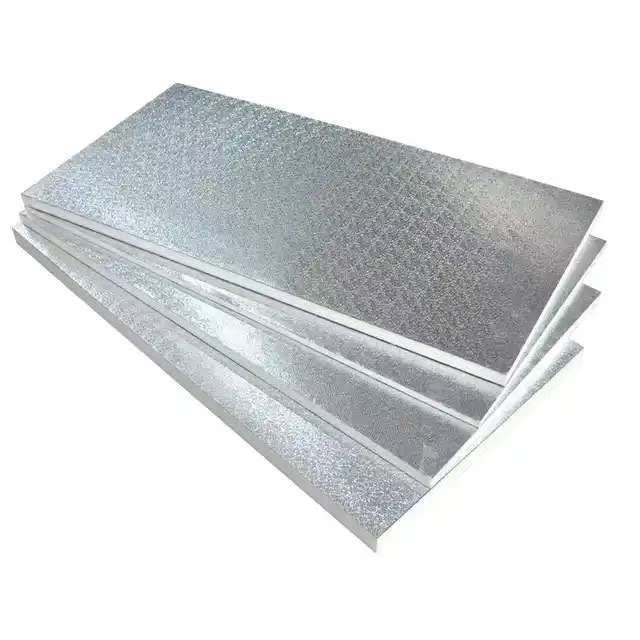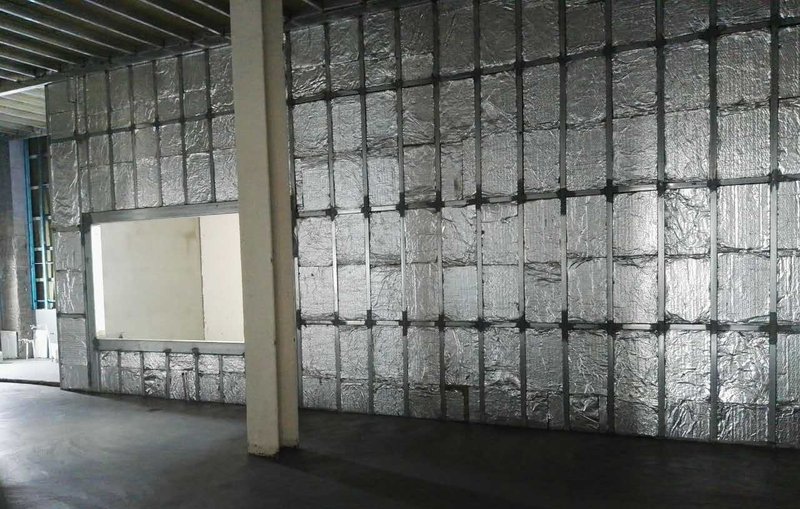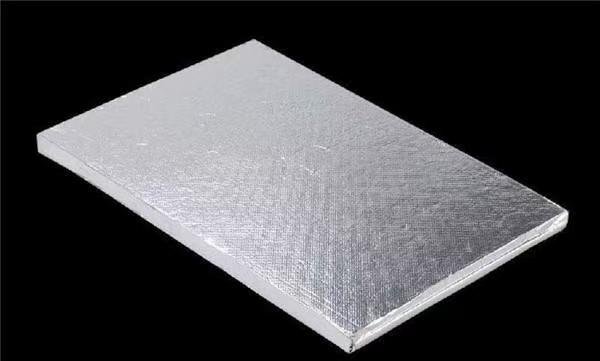Hebei Woqin Vacuum Insulation Panel: A Nanoscale Thermal Insulation Revolution Redefining Building Energy Efficiency
Under the challenge that global building energy use contributes to 40% of carbon emissions, Hebei Woqin’s STP vacuum insulation panel is redefining thermal protection with nanoscale innovation. This “super insulator” combines a silica nanocore and a multilayer composite gas barrier to achieve conductivity as low as 0.002W/(m·K)—just 1/10 of traditional materials—while withstanding temperatures from -200℃ to 600℃. This article explores its role in reducing wall thickness, achieving A1 fire protection, ensuring 60-year lifespan, and solving key challenges across passive houses, prefabricated buildings, and cold chain systems. From Munich to Xiong’an, Woqin’s patented solution is becoming the new standard in safe, efficient, and sustainable architecture.

I. From Microns to Nanometers: Reinventing “Building Insulation”
In Hebei Woqin’s lab, a 15mm silver-white board undergoes extreme tests—stable at -40°C and unyielding at 120°C. This is the STP (Super Thermal Performance) vacuum insulation panel, a product of 16 years of R&D. By translating aerospace-grade vacuum technology into a practical solution for civil buildings, Woqin enables ultra-thin, ultra-efficient, and aesthetically lightweight insulation systems for modern architecture.
Unlike traditional materials that depend on porous bulk to delay heat flow, the STP board uses vacuum pumping to remove air down to <0.02Pa, creating a nanoscale vacuum cavity that blocks convection entirely. Its silica aerogel-based composite core achieves an industry-low thermal conductivity of 0.002–0.008W/(m·K), outperforming air itself. A single 1cm STP board equals 3cm of rock wool or 5cm of polyurethane, freeing 5–10% of indoor space—a game-changer for high-density urban buildings.
II. Five Core Performance Features: Redefining the Standards for Insulation Materials
1. Extreme Insulation Across Temperature Extremes
In a Munich passive house project, a 2cm STP board endured -15°C, achieving energy use of just 15kWh/(m²·year)—one-tenth that of conventional buildings. Its vacuum structure excels from LNG tanks at -200°C to industrial furnaces at 600°C, maintaining A1 fireproof certification without emitting toxic gases.
2. Lightweight, Thin, Yet Structurally Resilient
At the 237m Qingdao China Railway Center, 15mm STP panels replaced 80mm rock wool, cutting wall weight by 70% and increasing curtain wall glass by 20%. With compressive strength ≥0.2MPa and tensile ≥0.1MPa, it withstands typhoon-level winds and exceeds national pressure resistance standards by 3×.
3. Decades of Stable Performance
Data from Wolfurt, Austria shows just 3% vacuum loss and <5% conductivity increase after 30 years. Its seven-layer composite barrier—with aluminum foil, fiberglass mesh, and nano-coating—combined with a 25g getter, maintains vacuum below 1mbar over 60 years.
4. Environmentally Sustainable Composition
The STP core uses 70% microsilica waste and emits no Freon. VOC emissions are reduced by 80% thanks to formaldehyde-free bonding, supporting LEED and China's green building certifications.
5. Versatile Applications Beyond Buildings
In logistics, Woqin’s VIP boxes preserve -18°C for 120 hours in 35°C weather—8× better than EPS. In Tesla’s battery plant, STP boards endure thermal shocks from 200°C to -40°C. Flexible variants wrap complex industrial shapes, with water repellency ≥99%.
III. Full-Scenario Applications: From Landmark Buildings to People’s Livelihood Projects
1. Building Energy Conservation
At Beijing New Children's Palace, STP boards were integrated with photovoltaic glass to create “insulation + generation + decor” facades. Winter heating dropped 47%, cooling load fell 35%, and total energy efficiency rose 60%. In dense cities, STP unlocks 50–100m² of usable space per building and improves ROI by 30%.
2. Prefabricated Buildings
A collaboration with Tongji University produced a reverse-casting panel system that removes connectors and outer layers. Wall thickness dropped from 20cm to 12cm, weight by 40kg/m², and cost by 150 yuan/m². It passed 8-grade seismic tests in Xiong’an and reduced construction time by 40%.
3. Industrial Thermal Protection
In Jinan Steel’s blast furnaces, STP panels halved heat loss, cut surface pipe temps from 60°C to 30°C, and prevented worker burns. Their salt-spray resistance doubles lifespan and cuts maintenance by 50%.
4.Cold Chain Logistics
During COVID-19 vaccine transport, STP medical boxes achieved ±0.5°C accuracy. Location tracking has <50m error, and fresh e-commerce companies reported loss rate drops from 8% to 1.2%. Each box is reusable 500 times, cutting emissions by 70%.
IV. Technical Barriers: A Patent Matrix Guarding the Quality Bottom Line
Woqin’s advantage lies in deep-tech mastery across materials, processes, and engineering. Its seven-layer gas barrier film passes ASTM E96, with vapor transmission <0.1g/(㎡·24h)—20× better than standard foil.
Its automated factory ensures <0.5% core filling error, 0.01Pa pressure control, and 1000-fold bend and helium leak tests for zero-defect delivery. As a designated material by the China Academy of Building Research, Woqin has helped draft ISO 16478, bringing Chinese standards global.
V. The Future is Here: When Buildings Start “Self-Insulating”
Woqin’s roadmap includes smart STP panels with embedded nanosensors. These monitor wall conditions and adjust vacuum valves for humidity control and thermal optimization. Integration with BIM systems enables full digital workflows, shortening project time by 25%.
In Xiong’an’s carbon-neutral zone, STP panels work with ground-source heat pumps and ventilation to achieve “zero-carbon heating,” where solar output offsets winter energy use. These systems transform buildings from energy consumers to energy balancers—redefining their role in sustainable ecosystems.
Conclusion
Hebei Woqin’s STP vacuum insulation panel is the perfect marriage of material science and architectural evolution. It proves that buildings can be safer without bulk, greener without compromise, and smarter without complexity. From Europe’s Alps to China’s megacities, in temperatures from -200°C to 600°C, Woqin’s nanotech guardian is shielding structures while advancing civilization.
This isn’t just another product—it’s a redefinition of how humans live with, build upon, and protect the environment. Through each embedded panel, we move closer to a future where every building is a resilient, efficient, and harmonious part of the planet.
LATEST NEWS
Comprehensive Overview of Polvere di Aerogel Product Lines for Industrial Buyers
2025-12-06
Exploring Aerogel Home Insulation as a Sustainable Choice for Modern Buildings
2025-12-06
Understanding Aerogel Home Insulation for Enhanced Fireproofing and Energy Saving
2025-12-05
Selecting the Right Polvere di Aerogel for Construction and Industrial Needs
2025-12-05
Reducing Energy Costs with Aerogel Home Insulation Technologies
2025-12-04


